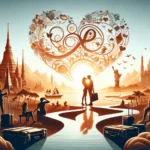The exploration of sexual intimacy is as old as civilization itself, manifesting in the arts, literature, and practices of societies around the globe. This journey through history reveals how different cultures have celebrated, depicted, and understood sexual intimacy, offering a fascinating glimpse into the universal yet diverse expressions of human desire and love.
- Ancient India: The Kama Sutra and Erotic Sculptures
Ancient India’s contribution to the world of erotic art and literature is unparalleled, with the Kama Sutra being its most famous legacy. This ancient text, written by Vatsyayana in the 2nd century CE, is not merely a manual on sexual positions but a comprehensive guide to living a fulfilling life, including the nature of love, family life, and other aspects of human relationships. The erotic sculptures adorning the temples of Khajuraho are another testament to India’s open celebration of sexuality, depicting a range of sensual expressions that continue to fascinate visitors from around the world.
- Ancient Greece: The Celebration of the Body and Homosexual Love
The ancient Greeks celebrated the human body and sexuality with remarkable openness. Their art and literature frequently depicted erotic scenes, including homosexual love, which was often celebrated in the context of mentorship and camaraderie. The Symposium, a philosophical text by Plato, explores the nature of love and beauty, including the concept of spiritual and physical love. The Greeks’ celebration of the body and diverse expressions of love significantly influenced Western art and culture.
- Japan: Shunga and the Art of Seduction
Shunga, a genre of Japanese erotic art, flourished during the Edo period (1603–1868). These woodblock prints depicted scenes of sexual intimacy with an often whimsical and joyous tone, serving as both titillation and instruction for their viewers. Shunga was enjoyed by men and women alike and was not considered taboo. It represents a unique perspective on sexuality, emphasizing pleasure, humor, and the naturalness of sexual desire.
- Pre-Columbian Americas: Fertility and Duality
The civilizations of the Pre-Columbian Americas, such as the Maya and the Aztecs, incorporated sexuality into their religious and cultural practices. Fertility was a central theme, with gods and goddesses often depicted in sexual acts or displaying exaggerated sexual features to symbolize fertility and creation. These cultures embraced a duality in sexuality, acknowledging the importance of both masculine and feminine forces in the natural and spiritual worlds.
- The Renaissance: A Revival of the Erotic Arts
The Renaissance period in Europe marked a revival of interest in the human body and classical antiquity, leading to a new wave of erotic art and literature. Artists like Titian and Michelangelo celebrated the beauty of the human form, often imbued with sensual undertones. The period also saw the publication of risqué literature, such as the sonnets of Pietro Aretino, which unabashedly explored sexual themes, reflecting a society increasingly interested in the complexities of human desire.
- Victorian England: Eroticism Underneath the Surface
Despite the prudish reputation of Victorian England, the era was rife with erotic literature and art, albeit often circulated underground. Works such as “My Secret Life” by an anonymous author and the sensual paintings of the Pre-Raphaelites hinted at a society fascinated with sex and sensuality, beneath its veneer of respectability. The contrast between public morality and private fascination offers a compelling insight into the complexities of human sexuality.
- Modern Exploration: Sexuality in Contemporary Art and Thought
In the modern era, the exploration of sexuality has become more explicit and diverse, reflecting changing social attitudes and the fight for sexual rights and freedom. Contemporary art, literature, and film continue to push boundaries, exploring the myriad forms and expressions of human sexuality. The work of artists like Robert Mapplethorpe, the literature of Anais Nin, and the films of Pedro Almodóvar are just a few examples of how modern culture continues to explore and celebrate the erotic.
This journey through history shows that sexual intimacy has always been a vital part of human culture, manifesting in myriad forms across time and geography. The exploration of eroticism not only reveals the diversity of human desire but also serves as a mirror to the values, struggles, and aspirations of societies throughout history.



